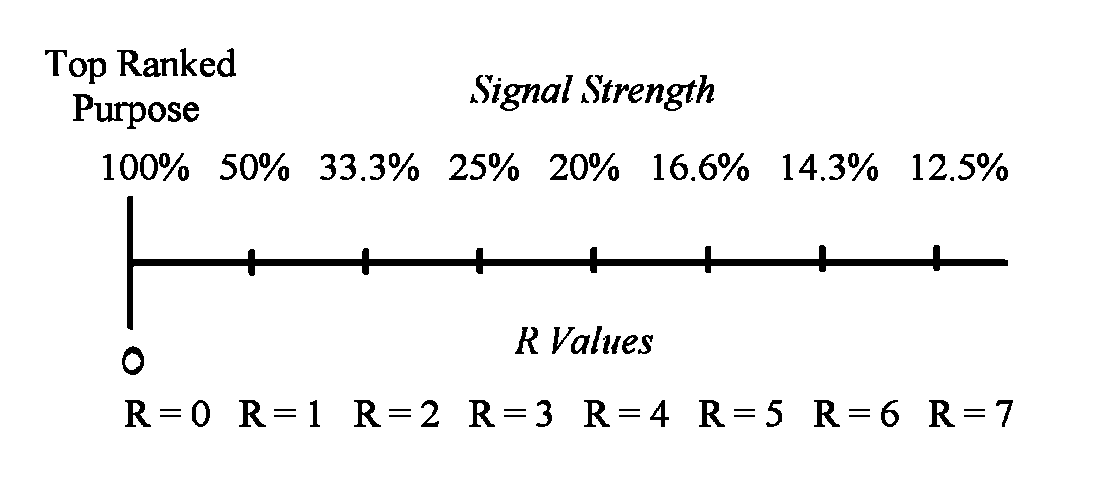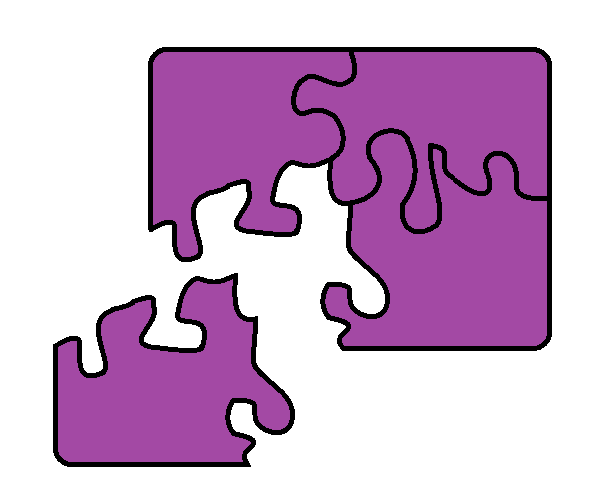A permanent link of this post is listed here… On the Nature of Emotions: Article 1 of 12
An Introduction to the Framework of Affect Engineering
This is the first article in a series designed for the layperson that will explain the basics of Affect Engineering as a theory of emotions. Each article will begin with a list of questions that it will aim to address. The sections that follow will be in two parts each. The first part will be a short statement that answers each question as succinctly as possible. The second part will either be an explanation that goes into more detail where needed or explain some of the implications of the short answer.
At least twelve articles are planned in this series. The first three articles will cover the basic framework of Affect Engineering along with some of the principles to which it adheres. The next two articles will explain some of the additional variables in the functions of Affect Engineering. The seven articles thereafter will cover the classification of different emotions, the properties of those emotions, and the rationale behind their organization into four categories within Affect Engineering.
QUESTIONS
- What is an emotion considered to be in Affect Engineering?
- What role do emotions serve in Affect Engineering?
- How are emotions quantified within the framework of Affect Engineering?
- How are different emotions distinguished from one another in Affect Engineering?
- What is emotional arousal in Affect Engineering?
What Is an Emotion Considered to Be in Affect Engineering?
SHORT ANSWER
Emotions are tools that serve as a call to action to the individual and sometimes to others who are witnessing it as well.
IN DEPTH EXPLANATION
Given the vastness and scope of this topic, the psychology of emotions, this approach will move from the general to the specific for the most part, but will also draw insights from specific examples at times. For better and for worse, throughout the whole of human history there has been no shortage of discussions on emotions, almost to the point where any attempt at synthesizing the multitude of different viewpoints into a cohesive whole might sound like a fool’s errand. Nonetheless, a common criticism of emotions is that they are often said to be subjective, fickle, biased, and they are frequently given perhaps the most derogatory label of all, irrational. However, instead of thinking of reason and emotion as polar opposites, it is perhaps more useful to think of them as two sides of the same coin. A person’s logical and emotional faculties do, after all, arise from the same human body.
Broadly speaking, in Affect Engineering emotions are considered to be tools. In a stricter sense, emotions are considered to be adaptations that serve as a call to action delivered from the self and to the self. Sometimes they also serve as a call to action to others around who may witness physiological expressions of the emotion in the individual, such as changes in their facial expressions, their rate of breathing, their tone of voice, or even their physical movement such as tremors or fleeing to name a few.
Emotions are not merely processes that exaggerate or distort an individual’s perceived value of an entity in an irrational fashion. These amplifications and deamplifications of the perceived value of an entity — an entity that is being assessed for its ability to fulfill of a purpose harbored by the individual — are indicative of the emotion itself, and have their own logic to them. The importance of linking affect (i.e., a feeling) to a purpose the individual holds cannot be understated. Within Affect Engineering, attachment of affect to a purpose harbored by the individual transforms affect into an emotion for the individual. Affect that is unattached to a purpose harbored by an individual can be likened to white noise, much like static interference in a radio transmission, or even lost heat energy that is unavailable to do work in an electrical system (i.e., entropy).
Change in an individual’s perceived value of an entity as the entity relates to the fulfillment of a purpose is the criterion by which different emotions are classified and measured in Affect Engineering. This can be demonstrated with an example of a homeowner facing an imminent natural disaster (e.g., wildfire, tornado, hurricane, flooding, etc.). The entity in jeopardy in this case is the home, and the purpose that it is being valued for is the home’s ability to provide shelter. If it is assumed that the home in question is the individual’s only home, then anything that threatens to damage, destroy, or prevent access to it would be expected to worry the individual and elevate their valuation of the home with respect to the purpose at hand, the acquisition or maintenance of shelter in this case. A wide range of emotions could of course be expected to result depending on the context of any particular scenario, but in most cases an initial sense of panic or fear would likely be among the first things that someone would feel. A natural disaster would threaten to destroy the integrity of the home completely, and compel the individual to reassess their home with respect to the purpose of possessing shelter. Additionally, every other purpose for which the home is being valued would also be brought to forefront of attention. The degree to which the individual’s valuation of the home rises would correspond to the magnitude of the emotion felt, fear in the case of this example.
That being said, within the framework of Affect Engineering, a single entity will also elicit several different valuations, and subsequently give rise to several different emotions, depending upon the many different purposes for which the entity is being considered.
What Role Do Emotions Serve in Affect Engineering?
SHORT ANSWER
Emotions help an individual to organize, and subsequently optimize, purpose-directed behavior and expectations by signaling which entities should be given the most priority.
IN DEPTH EXPLANATION
To understand how emotions help an individual organize purpose-directed behavior and expectations in Affect Engineering, the four variables in the base of the function will need to be explained. The first is Existence, and it is followed by the three utility variables of Sufficiency, Uniqueness, and Sentiment.
Existence
The variable of Existence answers the question, “Has the individual ever thought about the entity’s existence?” Cognizance of an entity’s existence is generally modeled as an all or nothing affair (i.e., it is a discrete variable in the functions equaling either zero or one), and as a variable holds sway over the three utility components in most setups.
The entity in question does not need to be an animate object, such as a rock or a tree, to be considered to exist by an individual. It may be an intangible concept like freedom, an imaginary creature like a unicorn, or even a designated unknown object, such as a known unknown, to borrow from Donald Rumsfeld’s Rumsfeld Matrix. People discover the existence of new things every day of course, and they may first come to the conclusion that there is something out in the world of which they know nothing about, thus creating the spark for curiosity and investigation.
Sufficiency
The Sufficiency variable answers the question, “Is the entity enough to fulfill the purpose at hand?” If other objects are needed, then this value diminishes. Sufficiency is expressed as a fraction in the functions of Affect Engineering, or more specifically, as one divided by one plus the number of additional entities required.

An Entity’s Sufficiency with respect to the fulfillment of a purpose is expressed as a fraction.
Uniqueness
The Uniqueness variable answers the question, “Is the entity the only one of its kind?” If other objects can match the entity on all levels, or if pairs of other objects can match the entity on all levels, then this value diminishes. Uniqueness is expressed as a fraction in the functions, or more specifically, as one divided by one plus the number of alternatives that can match the entity on all levels.

An Entity’s Uniqueness with respect to the fulfillment of a purpose is expressed as a fraction.
Sentiment
The Sentiment variable answers the question, “How important is the purpose at hand with respect to the purpose with the utmost priority?” This variable is modeled as being under the direct influence of the individual itself. In essence, Sentiment also represents the individual’s capacity for free will, but it can be held constant to look at the influence of other variables in the function or to build a function more in line with Behaviorism or other deterministic approaches to decision making. With indeterministic approaches (e.g., ones where free will is present, or causality is not presumed), emotions can be modeled with the functions in Affect Engineering but not predicted as the Sentiment variable would not be held constant.
Like Sufficiency and Uniqueness, Sentiment is modeled as a fraction in the functions, or more specifically, as one divided by one plus the Absolute Rank of the purpose. The Absolute Rank refers to the displacement of the importance of the purpose at hand from the importance of the purpose with the utmost priority to the individual, and it can be thought of as signal strength. The purpose with the utmost priority will have an Absolute Rank of zero (i.e., it has no displacement with its rank against the purpose with the utmost importance, much like absolute value and displacement from the origin). A purpose with an Absolute Rank of one would have one-half the signal strength for Sentiment. A purpose with an Absolute Rank of two would have one-third the signal strength for Sentiment, and so on.

The individual’s Sentiment felt towards the purpose at hand is also expressed as a fraction, and represents a signal strength.

Summation
Entities that exist to an individual, (i.e., meaning the individual has thought about them at one point in time), that have a high degree of Sufficiency and Uniqueness for a purpose that has a high level of importance to the individual (i.e., has a high degree of Sentiment), will also have a high value attributed to them. More energy will be directed towards those entities to mark them with value, and the individual will be called to give priority to their acquisition or protection. If a box of chocolate chip cookies is the only food around to eat, is sufficient as a food source by itself, and the individual is extremely hungry, then the box of cookies would be expected to receive a high valuation and the individual would feel a strong call to action to give priority to the acquisition of the box of cookies.
Conversely, entities that have a low degree of Sufficiency and Uniqueness for a purpose that also has a low level of importance to the individual (i.e., a low degree of Sentiment), they will have a low value attributed to them. Less energy will be directed towards these entities, and the call to action will be weaker for these entities. Their priority will be lower to the individual as well. If a chocolate chip cookie baking mix were one of dozens of other brands of cookie options on a store shelf, and it requires several other ingredients to make it edible (e.g., liquid, binding agents, an oven, cooking time, etc.), and the individual is not hungry at the moment, then it would not be given a high valuation. The individual would feel a weak call to action and less priority would be given to the acquisition of the chocolate chip cookie baking mix.
Lastly, if an individual has never cognized the existence of an entity, then no priority will be given to it whatsoever, as no energy is being directed towards it. If an individual has never fathomed what a chocolate chip cookie is or is not, and is completely unaware of the existence of cookies, then no emotions would be associated with them.
How Are Emotions Quantified within the Framework of Affect Engineering?
SHORT ANSWER
Emotions are quantified or measured in Affect Engineering by observing the physiological and affective responses that correspond to changes in an individual’s valuation of an entity with respect to the fulfillment of a single purpose that the individual holds. Affect Engineering uses a unit of measurement labeled the Emotional Unit.
IN DEPTH EXPLANATION
The outward expression of emotions is oftentimes given to be an indicator of what lies beneath the surface, such as a smile to indicate happiness, or crying to indicate sadness. However, a look at the ambiguity and sheer variety of outward manifestations of emotions across history and different cultures will reveal that simply relying on physical observations alone will not suffice in the effort to create a comprehensive theory of emotions. The above two examples might even have the emotions to which they correspond flipped, with someone crying tears of joy or alternatively putting on a smile when they are feeling sad and depressed. The outward manifestations of emotions (e.g., facial expressions), will be likened to three jigsaw puzzles here. Each puzzle is cut in exactly the same manner, so that all of the pieces are interchangeable between the three puzzles; metaphorically speaking, they all represent the same underlying emotion. However, they each have different images superimposed upon them, with the image representing the outward manifestation of the emotion. This could happen for a number or reasons, for instance, due to different display rules, that is to say, culturally specific expectations regarding how certain emotions should be expressed, or even due to there being no expectation of an outward manifestation of the emotion at all.




To relate the metaphor to the task at hand, the primary aim then would be to find out the underlying structure of how the jigsaw puzzle pieces arrange themselves to become locked together, or discover the underlying relationships that cause specific emotions arise. The focus would then be more on how the pieces fit together, or in a less metaphorical sense, it would be on uncovering the underlying structure of specific emotions. Less time would be spent dwelling on the images superimposed upon the jigsaw puzzle pieces themselves, which would parallel the display rules or the outward manifestation of of emotions, which may be similar in some parts of the image but different in others.
Affect Engineering primarily focuses on the underlying structures and relationships that lead to specific emotions arising, and approaches the study of emotions primarily from a cognitive approach that emphasizes neural relationships, but it is not necessarily limited to this. For instance, returning to the example above of the jigsaw puzzle metaphor, the two puzzles could instead have the same image superimposed upon them (i.e., an identical display rule or outward manifestation), but both puzzles might have different jigsaw cuts and represent two different underlying emotions (e.g., happiness vs. sadness) despite having the same outward manifestation (e.g., smiling).


Similarly, the theory would also need to be able to account for how a different underlying structure for a different emotions might arrive at the same display rule across two unconnected populations or how certain display rules for an emotion may trigger the emotion in the individual itself, such as in the case of people smiling to make themselves happy, a reversal of the route. To account for the valid truths that different approaches to the study of emotions possess, and moreover, to reconcile some of the more seemingly contradictory theories of emotion with one another (e.g., physiological ones, with cognitive appraisal based ones), a flexible approach is needed that can accommodate all of the main approaches to the study of emotions.
Any approach that is going to use math or calculus as its basis is going to need a unit of measurement. For Affect Engineering, this unit of measure is a term that, for lack of a better name, is called the Emotional Unit. The Emotional Unit refers to the minimum number of activated neurons to cognize or acknowledge that an entity exists, even if the entity is merely an intangible thought and does not correspond to an actual physical object in the world. The precise minimum number of activated neurons or neural connections in a time frame does not necessarily need to be specifically known to make use of this; the important concept to grasp here is that whatever amount it may be, the Emotional Unit represents an amount of energy. Every activation of a neuron or neural transmission requires energy (i.e., Joules of energy), and a group of neurons firing also requires energy. As mentioned earlier, the cognition of an entity’s Existence is also the first variable that needs to be known before an individual can assign a value to it with respect to a particular purpose. This unit, the Emotional Unit is essentially the building block with which all other variables can be built, compared, and have their relationships constructed in Affect Engineering.
To quantify emotions in Affect Engineering, simply observing physiological and affective responses is not enough, because the underlying emotions and their structures may be different despite possessing the same outward manifestation. Likewise, simply figuring out an underlying structure alone is also not enough as well, because different underlying structures for different emotions might may lead to the same display rules in two different people. It is necessary to consider both the changes in an individual’s valuation of an entity with respect to the fulfillment of a single purpose that the individual holds, and the physiological and affective responses that correspond to them. Affect Engineering primarily focuses on the former, but the latter is not ignored or omitted. The unit of measurement for measuring valuations of entities in Affect Engineering is the Emotional Unit.
How Are Different Emotions Distinguished from One Another in Affect Engineering?
SHORT ANSWER
Different emotions are primarily distinguished from one another by the magnitude and the rate of change in an individual’s valuation of an entity with respect to the fulfillment of a single purpose.
IN DEPTH EXPLANATION
The statement, “Different emotions are primarily distinguished from one another by the magnitude and the rate of change in an individual’s valuation of an entity with respect to the fulfillment of a single purpose,” carries with it two implications. One of the implications is evident in the statement “rate of change,” and implies that an individual’s conception of the passage of time is a variable in the function. Time is a variable, but it has not been implemented yet in this series; it will eventually be introduced later, in article four of this series. Additionally, if a function is changing over time, then it will have a slope. In Affect Engineering, trends in the slope of a function across different time intervals are used to classify and identify different types of emotions. Derivatives of the functions are used to assess the magnitude, or intensity, of most emotions at a particular instance in time.
The second implication can be inferred from the two words, “primarily distinguished,” in the above statement regarding how emotions are distinguished from one another. In Affect Engineering, Emotions are secondarily distinguished in Affect Engineering by whether acquiring a specific entity will lead toward a restoration of equilibrium between a purpose and its opposite purpose or complementary purpose, or away from a restoration of equilibrium between the two. This leads to the need to use at least two separate functions to model emotions in Affect Engineering and will be explained in article three of this series.
Additionally, emotions can tertiarily be distinguished by whether or not they involve empathy and vicarious affect in Affect Engineering. Empathy is involved in all Category II and Category III emotions. Empathy will be explained in article five of this series. Category II and Category III emotions will be explained in articles eight through eleven of this series. Category I emotions will be explained in article seven, and Category IV emotions in article twelve.
What Is Emotional Arousal in Affect Engineering?
SHORT ANSWER
Emotional arousal in Affect Engineering concerns the physiological and affective responses corresponding to changes in an individual’s valuation of an entity as the entity relates to the fulfillment of a single purpose harbored by the individual and looks at the amount of energy invested into a specific entity for a specific purpose relative to the total amount of energy available to the individual value other entities for other purposes.
IN DEPTH EXPLANATION
Having designated a unit of measurement for quantifying the magnitude of emotions, the Emotional Unit, the next step is to look at the implications of this choice. As no individual’s energy resources have ever been found to be limitless, the need to manage emotional energy, or Emotional Units in the case of Affect Engineering, then becomes apparent for every individual. If too much energy is invested into one entity for the fulfillment of a particular purpose, emotionally arousing the individual to the point that all of their emotional energy has gone into valuing a single entity, then there will be little or no energy left to value other entities as they relate to the fulfillment of other purposes. It would all be tied up in a single entity, resulting in extreme tunnel vision. On the opposite end, if too little energy is put into valuing an entity, then the call to action will subsequently be weak and it will be ignored due to their being a lack of a sense of urgency. A balance of some sort then must be struck between all the entities being valued for all the purposes held by the individual.
Within Affect Engineering, the Emotional Unit is also a measure for another well mapped concept throughout psychology: anxiety. However, instead of treating anxiety as an emotion in and of itself, Anxiety (capitalized to highlight its distinction here) is reframed within Affect Engineering as a resource to be managed across all of the entities and purposes that an individual harbors. For example, what might traditionally be considered an anxiety attack would, in Affect Engineering, instead be reframed as an inability to demobilize Anxiety that has suddenly been invested into an entity being valued for the fulfillment of a purpose harbored by the individual. A significant portion of the individual’s Anxiety resources are, in essence, bound to the entity, and cannot be used elsewhere.
From a mathematical standpoint, Anxiety is represented by the derivative of functions used within Affect Engineering to assess the value of an entity as the entity relates to the fulfillment of a purpose, and it is measured in Emotional Units. Value, the Emotional Unit, and Anxiety are in essence interchangeable concepts within Affect Engineering. The reframing of Anxiety as a resource in Affect Engineering will be examined in the next article of this series.


